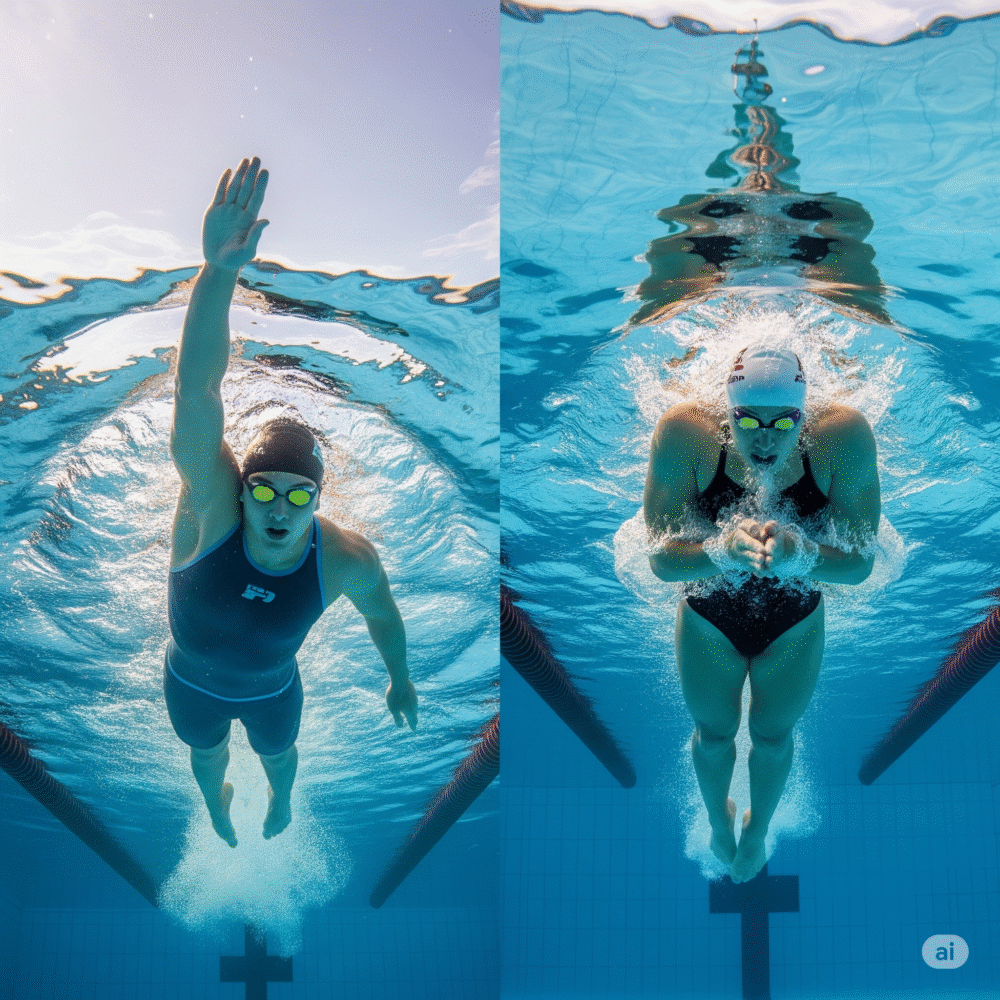Understanding Stroke Mechanics: Freestyle vs Breaststroke
Different strokes for different folks – but which one is right for you? Whether you’re training for endurance, aiming to improve speed, or simply swimming for enjoyment, understanding the differences between freestyle and breaststroke can help you get the most from every session in the pool. Each stroke offers unique advantages: freestyle is known for its efficiency and speed, while breaststroke provides better visibility, control, and accessibility for swimmers of all levels. At Runplaygo, we break down technique talk into clear, practical insights that you can apply right away.

Why Stroke Mechanics Matter
Swimming efficiently isn’t just about speed – it’s about mastering technique, timing, and body coordination. Freestyle and breaststroke are two of the most common strokes taught to beginners, yet they use different energy systems, body positions, and movement patterns. Understanding the mechanics of each helps swimmers choose the stroke that best suits their fitness goals, body type, or comfort in the water. Plus, proper mechanics prevent injuries and improve endurance.
Freestyle, also known as front crawl, is often faster and more aerobic, making it ideal for long-distance swims. Breaststroke, though slower, is rhythm-based, easier to learn, and useful for building strength and technique awareness. Both strokes have unique benefits – but only if performed with proper form.
Freestyle vs Breaststroke: Key Differences
- Body Position
- Freestyle: Horizontal, streamlined
- Breaststroke: Horizontal but with frequent upward motion
- Freestyle: Horizontal, streamlined
- Arm Movement
- Freestyle: Alternating windmill motion
- Breaststroke: Simultaneous sweeping movement
- Freestyle: Alternating windmill motion
- Leg Kick
- Freestyle: Flutter kicks from the hips
- Breaststroke: Frog kick with wide knee drive
- Freestyle: Flutter kicks from the hips
- Breathing Technique
- Freestyle: Turn head to side with every 2–3 strokes
- Breaststroke: Lift head forward every stroke cycle
- Freestyle: Turn head to side with every 2–3 strokes
- Speed & Energy Use
- Freestyle: Faster, more aerobic
- Breaststroke: Slower, more anaerobic control
- Freestyle: Faster, more aerobic
- Learning Curve
- Freestyle: Requires more coordination early on
- Breaststroke: Easier rhythm for beginners
- Freestyle: Requires more coordination early on
Freestyle vs Breaststroke: Mechanics Comparison Table
Feature | Freestyle | Breaststroke |
Body Position | Flat and streamlined | Undulating, with more drag |
Arm Cycle | Alternating | Symmetrical, simultaneous |
Kick | Flutter from hips | Wide frog kick |
Breathing | Side rotation | Forward lift |
Speed Potential | Fastest stroke | Slowest competitive stroke |
Energy Efficiency | High with good form | Moderate; more taxing per stroke |
Best For | Long-distance, triathlon | Strength building, stroke control |
Both strokes offer immense value depending on your goals. Triathletes and distance swimmers favor freestyle, while beginners and fitness swimmers may benefit more from mastering breaststroke first.
Choose the Stroke That Moves You
At Runplaygo, we encourage every swimmer to explore different strokes to find what suits them best. Whether you’re training for performance, recovery, or just starting your aquatic journey, understanding stroke mechanics gives you the edge. Freestyle builds speed and endurance; breaststroke builds control and balance. Use both to become a more versatile, efficient swimmer. With consistent practice and proper technique, the water becomes your strongest training partner.

